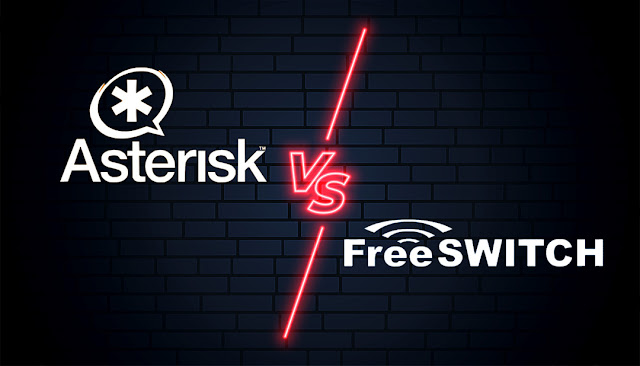Asterisk and FreeSWITCH are the two most widely used platforms for developing VoIP solutions in the VoIP industry. They are both powerful enough for developers to create any intricate VoIP solutions for teamwork and communication in addition to being open-source technologies.
What is Asterisk?
In 1999, Mark Spencer created Asterisk, a piece of software that distributes calls like an expensive PBX. His tiny group created the Asterisk call distribution and handling software for their business, Linux Support Systems, which was eventually renamed Digium.
What is FreeSWITCH?
The Asterisk platform has drawbacks, which led to the creation of FreeSWITCH in 2006. Anthony Minessale, a well-known Asterisk developer, made the decision to create a software from scratch to address some of the alleged problems with the Asterisk platform. This was later known popularly as FreeSWITCH.
If you are wondering why to switch from traditional to VoIP calling, here is an article on “PSTN v/s VoIP”
How Does Each Technology Work?
The heart of every Asterisk system is the dialplan. It is a scripting language, and the modules are used to give instructions to the Asterisk system through the configuration directory. Developers may implement a variety of capabilities, including call reception on a particular SIP channel, call connection to IVR, and dial plan-based call routing. Asterisk's configuration files are stored as standard text files.
FreeSWITCH adopts a different strategy; the system was created in C, and the core programming was better organized. FreeSWITCH uses processing threads that operate uniformly throughout memory, in contrast to the Asterisk approach, which gives each channel its own thread and memory space.
Basic Functionality
On the most fundamental level, both technologies offer the majority of the same functionality. Voicemail, call recording, and IVR menus should be available on every FreeSWITCH Development or Asterisk-based switch on the market. With any design, the steps involved in constructing extensions and gateways are quite similar. Nevertheless, depending on the server's Memory and core performance, different numbers of users may be supported. For communication with other Asterisk systems, Asterisk needs the proprietary IAX protocol, but FreeSWITCH is not constrained in this regard.
MultiTenancy
One of FreeSWITCH's features is its capacity to support several tenants. As a result, many user branches may use a single FreeSWITCH system as unique entities under their own domains or subdomains. For multi-tenancy to function on Asterisk systems, costly proprietary solutions must be constructed on top of it at the time of Asterisk software development.
Clustering
Asterisk is primarily made to operate on a single system. Using a single PBX server to install all roles is equivalent to placing all of your eggs in just one basket. Thus, it is advised to divide each system, performing a given function, into a distinct server for large-scale or enterprise- level PBX servers, i.e., distributed architecture. While FreeSWITCH solutions makes it simple for separate systems in the cluster to execute individual duties, accomplishing this with Asterisk is difficult.
IM abilities
Systems like Asterisk and FreeSWITCH provide cutting-edge communication features including conference, video calling, and chat. Unfortunately, the majority of Asterisk systems require on an add-on for IM functionality, which businesses must pay extra fees for. With FreeSWITCH, the only requirements are that the XMPP service be enabled and that the end devices be correctly set up for IM.
Device Deployment Capabilities
On either FreeSWITCH or Asterisk networks, device deployment varies greatly. Several endpoint management modules for IP phones and softphones are supported by Asterisk, however, access to the provisioning software costs around $100. Compared to Asterisk, FreeSWITCH offers a significantly smaller selection.
Wrapping Up
There is no discernible difference between a well-setup system running Asterisk or FreeSWITCH for the end user. In fact, FreeSWITCH provides a wider variety of modularity and is a better option for various VoIP solutions. With more than six years of experience developing commercial communication solutions using either open-source VoIP communication technology, Vindaloo Softtech is an accomplished VoIP development firm.

Comments